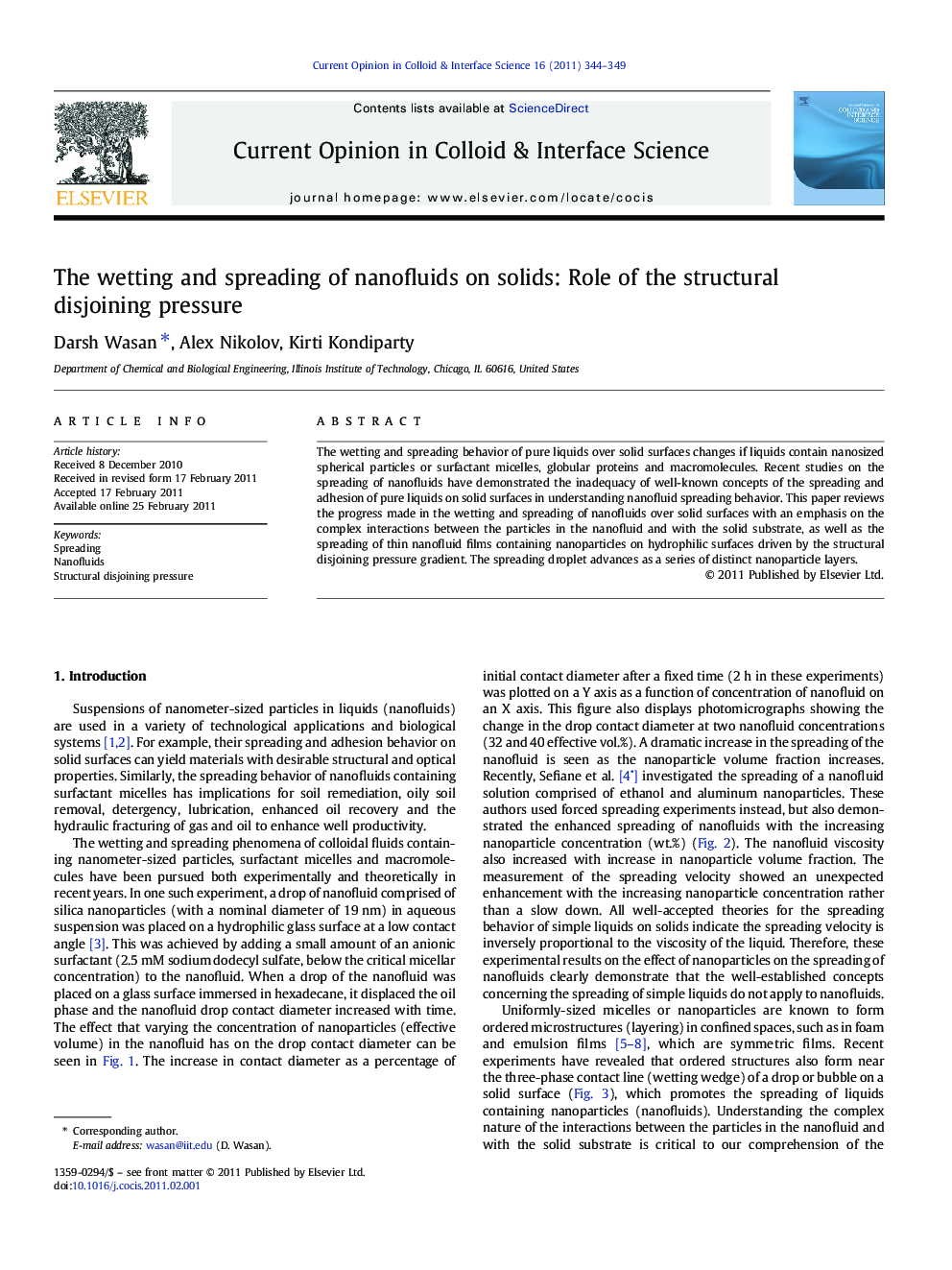| Article ID | Journal | Published Year | Pages | File Type |
|---|---|---|---|---|
| 603362 | Current Opinion in Colloid & Interface Science | 2011 | 6 Pages |
The wetting and spreading behavior of pure liquids over solid surfaces changes if liquids contain nanosized spherical particles or surfactant micelles, globular proteins and macromolecules. Recent studies on the spreading of nanofluids have demonstrated the inadequacy of well-known concepts of the spreading and adhesion of pure liquids on solid surfaces in understanding nanofluid spreading behavior. This paper reviews the progress made in the wetting and spreading of nanofluids over solid surfaces with an emphasis on the complex interactions between the particles in the nanofluid and with the solid substrate, as well as the spreading of thin nanofluid films containing nanoparticles on hydrophilic surfaces driven by the structural disjoining pressure gradient. The spreading droplet advances as a series of distinct nanoparticle layers.
Graphical abstractNanoparticle structuring in the wedge-film resulting in structural disjoining pressure gradient at the wedge vertex drives the nanofliud spreading.Figure optionsDownload full-size imageDownload high-quality image (173 K)Download as PowerPoint slideResearch highlights► Summarizes the progress made in understanding the spreading phenomenon of nanofluids. ► Complex interactions between the particles in the nanofluid and with the solid substrate. ► Spreading droplet advances as a series of distinct nanoparticles layers on surfaces. ► Structural disjoining pressure gradient drives the spreading of nanofluids.
